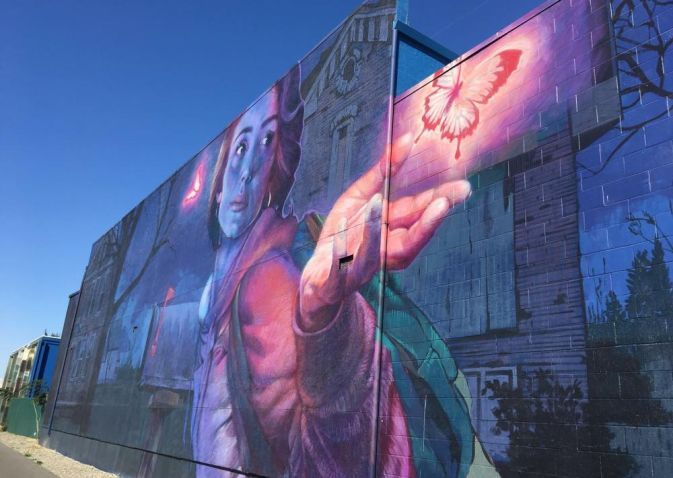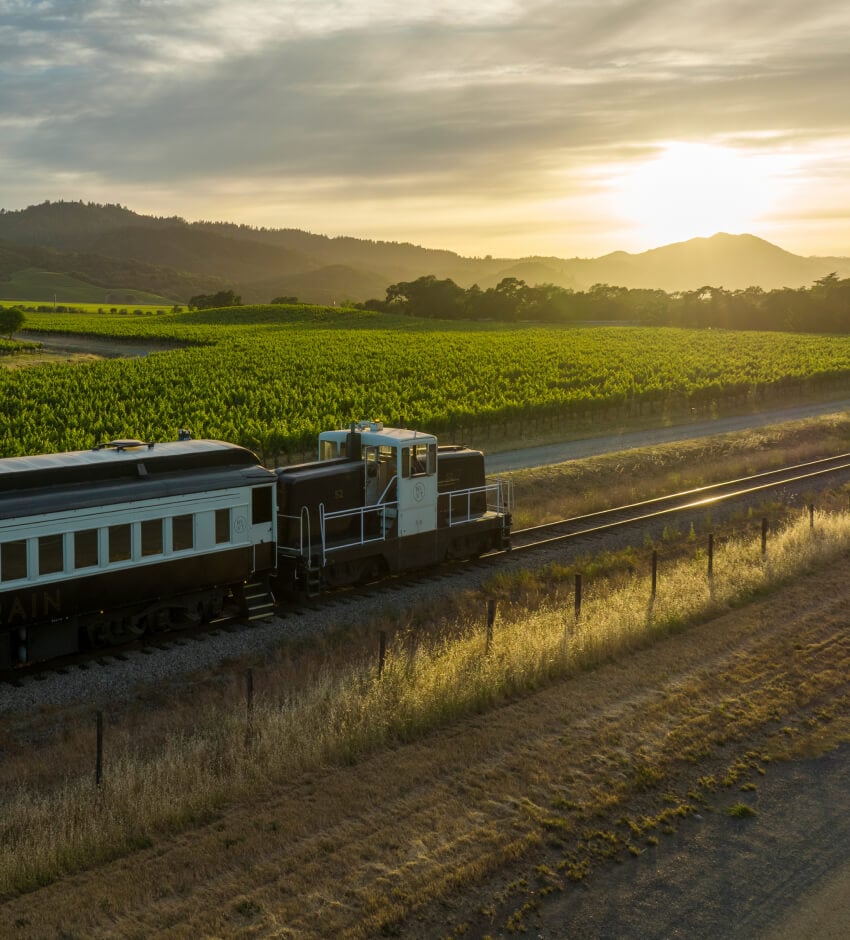RAD Napa helps cultivate Napa Valley with ongoing work on the “Cross-Town Commuter Path.” Vibrant murals, sculptures, and landscaping add to stunning visuals on this stretch of Downtown Napa.

The story of the Napa Valley Railroad, where the Wine Train travels every day, is over 175 years old. From the gold rush and wealthy citizens of early California to the inaugural Wine Train voyage, the rail line has a rich history of resilience and transformation, one that continues to be written today.

The history of the Napa Valley Railroad starts just before the gold rush. James W. Marshall, who lived and worked at Sutter’s Fort in midtown Sacramento, was the first to discover gold in California. During testing, a piece of this gold was used to buy goods in Samuel Brannan’s Sacramento mercantile store. Leveraging his newspaper business to spread the word, Brannan ingeniously persuaded Marshall and Sutter to reveal their gold while promising more would be discovered.
Before printing “Gold Found” in his New York City and San Francisco newspapers, Brannan purchased all the available mining supplies in the Western US, stockpiling them in San Francisco and Sacramento. News of gold spread fast throughout America between 1848 and 1855, enticing over 300,000 people to chase a dream of striking it rich in the West. Then, on September 9, 1850, California, the 31st State, was born.
After becoming California’s first millionaire, thanks to his flourishing mining supply business, Brannan purchased 2,000 acres in North Napa that he named Calistoga. As part of the new town’s infrastructure, including his new store, city hall, main street, and resort, Brannan built a train depot where the Napa Valley Railroad line terminated. It was the first step in his vision of a luxurious mode of transportation through Napa.
Brannan finished building the rail line in 1864. It was a direct route for visitors, a way to transport patrons from the San Francisco Bay ferry boats in Vallejo to his Calistoga resort—known today as Indian Springs Resort and Spa. Brannan’s rail line and trains took vacationers on a voyage through the Valley in lavish style.
After Brannan made a number of poor financial decisions, the Napa Valley Railroad was eventually sold in foreclosure to California Pacific in 1869. The line became a mixed-use freight and passenger train, servicing Napa’s agriculture and tourism industries.
Southern Pacific bought California Pacific and the Napa Valley Railroad with it. During the late part of the 19th century and the early part of the 20th century, the railroad played a vital role in the economic and agricultural development of Napa Valley, providing regular passenger service to its communities.
With the birth of the automobile, the train began to lose much of its importance. People were able to drive freely with their own means of transportation and no longer relied as heavily on public modes of travel. Passenger service was discontinued in the 1930s, and the line began to fall into disrepair.
Southern Pacific abandoned the right of way between St. Helena and Calistoga, and eventually, Southern Pacific was only running one freight train a week on the remaining tracks.
Southern Pacific sold the property in 1984, but a group of Napa Valley residents, known as The Society for the Preservation of the Napa County Railroad, banded together to save it. Ultimately, their efforts fell short, but the group inspired Dr. Alvin Lee Block, who founded the Napa Valley Wine Train Inc. This new vision sought to preserve the transportation corridor for future use and reduce traffic congestion in Napa Valley.
Block and his partners went on a hunt to find investors. Their search led them to Vincent DeDomenico, one-time-owner of Ghirardelli Chocolate and other successful ventures. The Napa Valley Wine Train Inc. sold him most of the company’s shares and appointed him President and CEO. Finally, the Napa Valley Wine Train was able to buy the line from Southern Pacific and begin its transformation into the business it is today.
The company began acquiring and renovating antique rail stock, transforming them into elegant cars. The Napa Valley Wine Train also began to hire a dedicated team to provide guests with an unmatched luxury rail experience, including food and service experts, engineers, and conductors. September 16, 1989, marked the inaugural passenger voyage of the Napa Valley Wine Train.
At the start of 2016, Noble House Hotels & Resorts purchased the Napa Valley Wine Train after Vincent DeDomenico’s passing years prior. The acquisition ushered in a new era of this famed attraction. Known for their one-of-a-kind experiential destinations, Noble House committed to preserving the history and developing the future of the Wine Train.
The Wine Train continues to be a legendary attraction for international tourists and local daytrippers. Today, guests can choose from 13 signature experiences, offering gourmet fare prepared and served onboard. From daytime trips to celebrated wineries to elegant evenings aboard a luxurious train car, the Wine Train delivers a quintessential Napa experience with every ride.